In the ultra-exclusive world of high-end design, a silent revolution is taking place. Far from the mainstream radar, nine trends are emerging from elite ateliers, crafted by visionaries for an initiated clientele. These aesthetic movements transcend mere decoration to offer true philosophies of luxurious living, combining sophisticated cultural references, exceptional materials, and artisanal craftsmanship. From Wabi Opulence that elevates Japanese imperfection with precious materials, to Dopamine Luxe that reinvents maximalism with unprecedented sophistication, these confidential trends transform homes into artistic manifestos and redefine the codes of contemporary luxury.
1) Wabi Opulence: The Art of Precious Imperfection
What is Wabi Opulence?
Wabi Opulence transcends traditional Japandi by infusing it with an unprecedented luxurious dimension. This trend marries Japanese wabi-sabi aesthetics – celebrating imperfection and the ephemeral – with exceptional materials and artistic craftsmanship. The integration of discrete technologies like modular furniture with hidden functionalities distinguishes this approach from classic Japanese minimalism. Spaces reveal precious woods like Gabonese ebony, signed artisanal ceramics, and wild silk textiles, while maintaining the clean lines characteristic of Japanese style.
The Major Figures of Wabi Opulence
Norm Architects (Copenhagen) perfectly embody this philosophy. This design studio enriches spaces through a balance between function and beauty, creating interiors where soft colors and precious tactile materials dialogue harmoniously. Their recent projects integrate rare essences in compositions of apparent simplicity yet extreme technical sophistication.

Tadao Ando, the Japanese master of concrete, reinterprets his architectural signature by integrating Gabonese ebony interventions. His recent meditative spaces reveal how minimalism can accommodate material opulence without losing its spiritual essence.
Ilse Crawford, influential British designer, reinvents Scandinavian hygge by adding wild silk textiles and rare art objects. Her interiors for London private residences demonstrate how Nordic comfort can embrace international sophistication.
2) Concrete Cocoon: The Transformation of Brutalism
What is Concrete Cocoon?
Concrete Cocoon revolutionizes the heritage of 1970s brutalism by transforming raw concrete’s harshness into a sensual and warm material. This trend preserves brutal monumentality while softening it through precious interventions: mass-tinted concrete, brass or oxidized copper inlays, indirect lighting systems, and mohair cocoon textiles. Eco-brutalism now integrates greenery and biophilic principles, creating spaces where architectural power dialogues with vegetation.
The Major Figures of Concrete Cocoon
Peter Zumthor dominates this approach with his revolutionary mass-tinted concrete techniques. The Swiss master develops compositions where metallic inlays transform brutal harshness into tactile sensuality, as seen in his recent Alpine residential projects.
Michael Pawlyn
Michael Pawlyn, pioneer of eco-brutalism, revolutionizes the approach by integrating vertical gardens and rainwater collection systems into raw concrete. His projects demonstrate how brutal architecture can become regenerative and symbiotic with the environment.
Michael Pawlyn is a pioneering architect in biomimetic design and regenerative architecture through his studio Exploration Architecture. His “Biomimetic Office Building” project exemplifies a shift from sustainability to regeneration: the building is conceived to self-heat, self-cool, self-ventilate, and even produce net-positive energy by mimicking biological strategies.
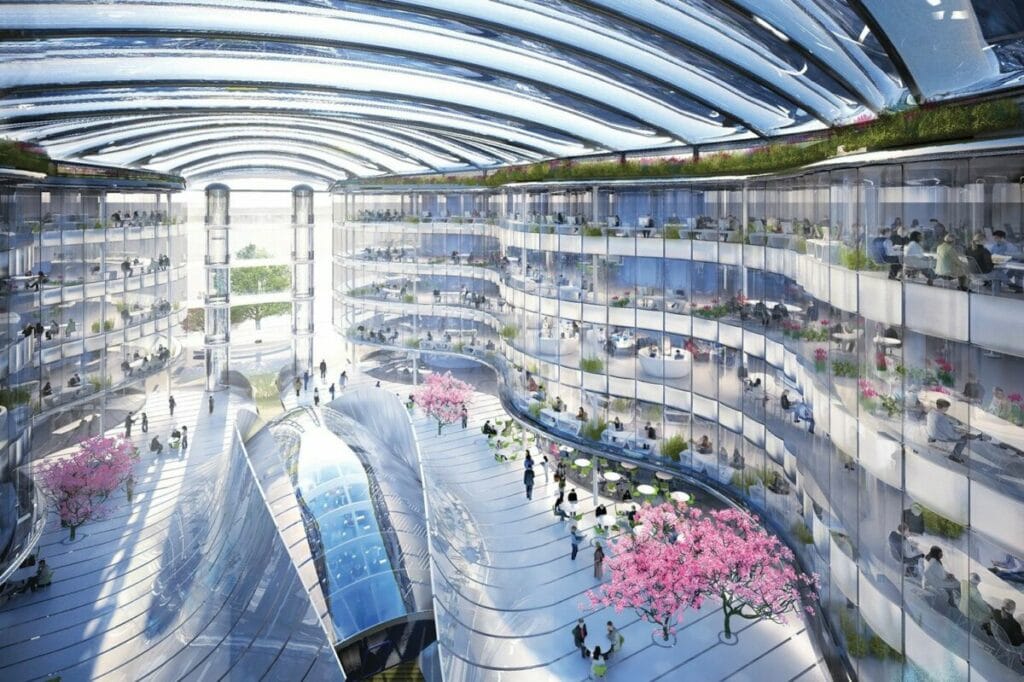
For instance, lighting systems are based on the spookfish’s eye technology to capture and reflect light, while structural forms draw from bird skulls and cuttlebone to optimize strength while reducing material usage. The glazed façade echoes the iridescent shell of molluscs, and shading is inspired by plants like the mimosa and patterns in beetle wings.
Tatiana Bilbao
Tatiana Bilbao, visionary Mexican architect, creates unexpected cocoon atmospheres by associating concrete with biomimetic lighting systems. Her oxidized copper interventions and lighting effects transform brutal coldness into enveloping warmth.
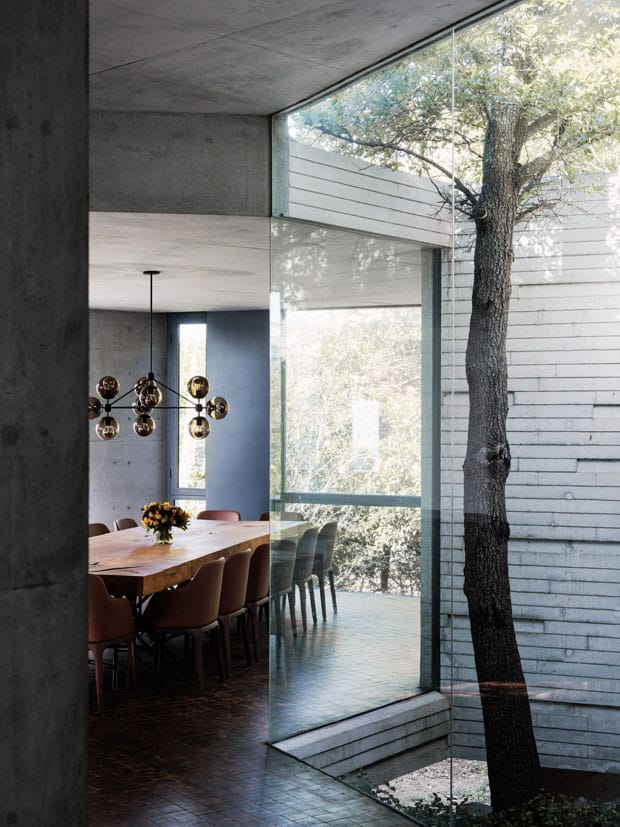
3) Memphis Couture: The Precious Geometry of the 80s
What is Memphis Couture?
Memphis Couture reinterprets the heritage of the 1980s Memphis movement by substituting the original plastic materials with noble materials and exceptional artisanal techniques. This trend preserves the bold geometric forms and vibrant colors characteristic of Memphis, but transposes them into unique creations made from rare marble, precious resins, or hand-patinated metals. Each object becomes a functional artwork, combining the original pop and irreverent spirit with exceptional artisanal craftsmanship.
The Major Figures of Memphis Couture
Jonathan Adler and his “neo-Memphis” style
Jonathan Adler, described as “neo-Memphis,” dominates this aesthetic with his rainbow Perspex creations and acrylic sculptures with bold geometric forms. His recent collections for high-end New York residences demonstrate how the Memphis spirit can access contemporary luxury.

Jonathan Adler is a key figure in postmodern interiors and the Memphis revival. Known for his “modern American glamour,” he blends mid-century silhouettes with kitsch flair, vivid colors, bold graphics, and sculptural accents. Adler believes design should spark joy—homes should be glamorous, playful, and unapologetically human.
Camille Walala
Camille Walala transcends the boundaries between art and decoration by applying Memphis principles to architecture with her monumental colorful creations on buildings from London to New York. Her urban interventions prove Memphis’s capacity to invest luxury public space.
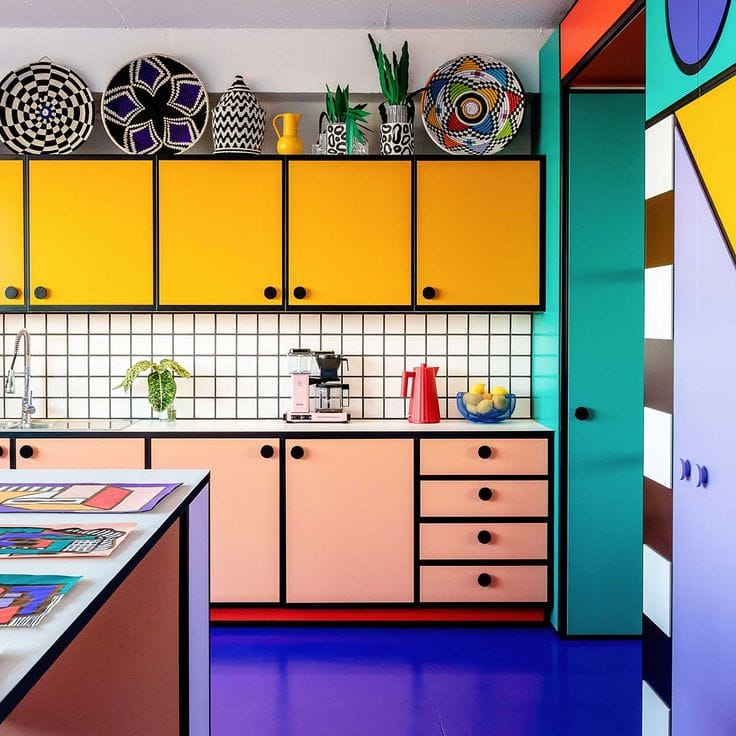
Camille Walala est une designer pluridisciplinaire française installée à Londres, reconnue pour ses intérieurs immersifs et ses environnements graphiques vibrants inspirés par le Memphis. Son style audacieux fusionne l’esthétique extravagante des années 80, l’influence tribal‑pop de l’art Ndebele et la géométrie op‑art, pour créer des compositions visuelles joyeuses et vibrantes. Parmi ses réalisations emblématiques figurent l’hôtel SALT of Palmar à Maurice, une fresque de sept étages à Brooklyn, des intérieurs de studio immersifs et des installations publiques telles que Villa Walala. Son approche promeut la positivité à travers la couleur et le motif.
Nathalie du Pasquier
Nathalie Du Pasquier, founding member of the original Memphis group, continues to create contemporary collections that establish the bridge between historical heritage and new luxurious interpretations of the movement.
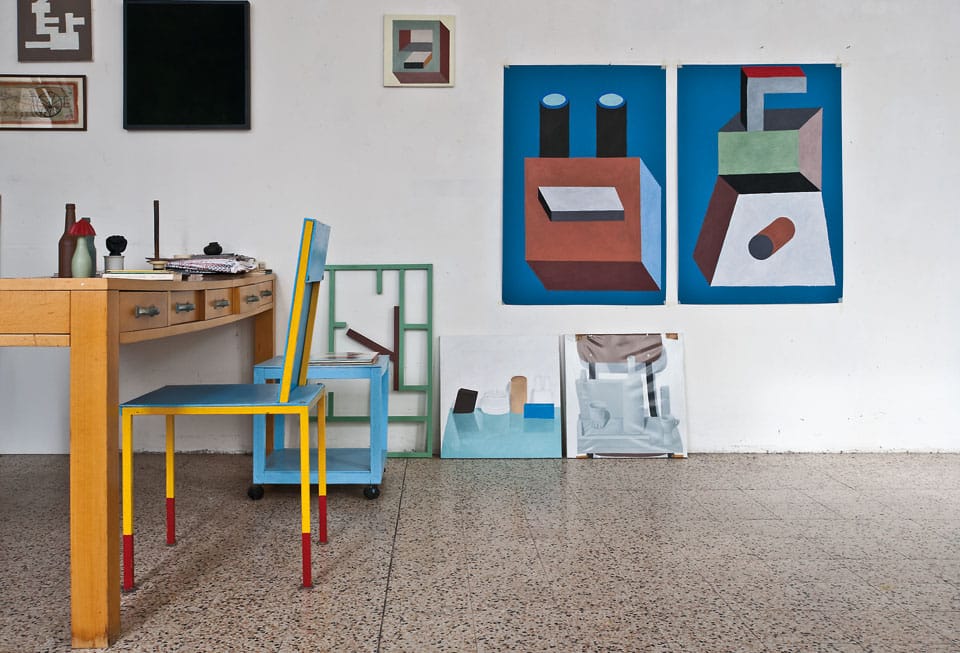
Her graphic language—vivid colors, bold patterns, and abstract forms—helped define the Memphis aesthetic. Though initially known for her iconic textiles, furniture, and surface designs, she shifted focus in the late 1980s to pursue painting full-time. Today, her practice explores the relationship between two-dimensional patterns and three-dimensional space, blurring the lines between art and design. Her collaborations with brands like Mutina and exhibitions at international galleries have reaffirmed her as a key voice in contemporary decorative arts.
4) Kintsugi Couture: The Elegance of Golden Imperfection
What is Kintsugi Couture?
Kintsugi Couture reinterprets the traditional Japanese art of repairing porcelain with gold by applying it to the entirety of contemporary decorative art. This trend celebrates imperfection as the epitome of elegance, highlighting cracks with gold, accentuating wood grains through mother-of-pearl inlays, and enhancing irregular weaves with precious threads. Wabi-sabi aesthetics meet luxury craftsmanship to create unique objects where each “flaw” becomes a precious decorative element.
The Major Figures of Kintsugi Couture
Maarteen Baas
Maarten Baas perfectly embodies this philosophy by voluntarily burning his furniture before lacquering it, creating unique pieces where destruction becomes artistic creation. His recent series for private collectors push this process toward unprecedented degrees of sophistication.
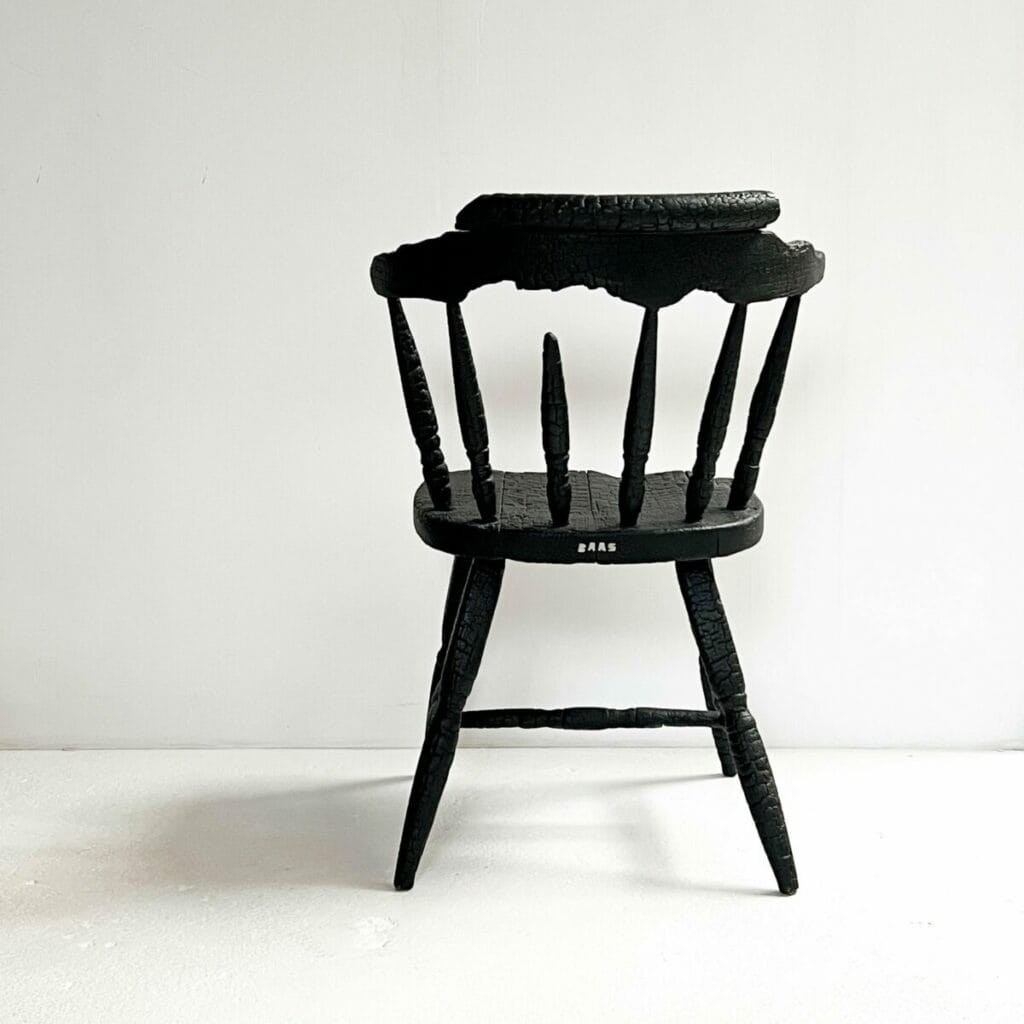
Max Lamb
Max Lamb is a British designer celebrated for his direct, hands-on approach to material and form. His work ranges from hand-carved wooden chairs and granite furniture to sculpted polystyrene seating coated in glossy finishes. With exhibitions like “Exercises in Seating”—a collection of over 40 chairs made since 2006—and projects such as BOX at Gallery FUMI, Lamb explores imperfection, process, and the tactile relationship between object and maker. He often crafts pieces in situ—pouring pewter in sand, hewing granite, assembling puzzle‑like wooden forms—always revealing the process in the final design.
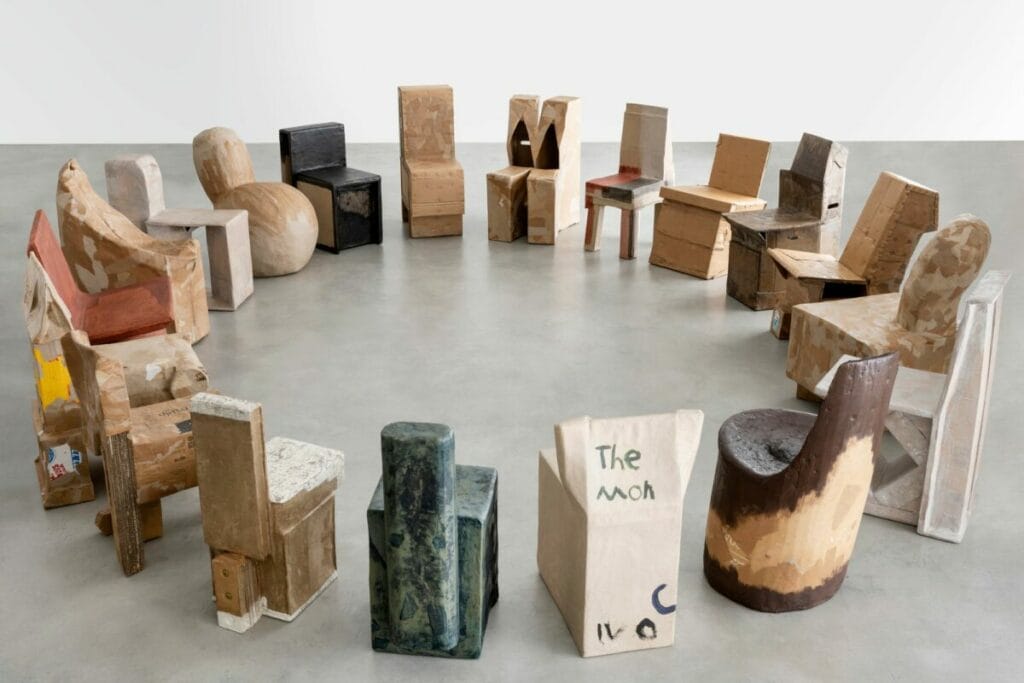
Max Lamb sculpts directly into marble blocks, leaving tool traces visible which he then elevates through selective polishing and platinum inlays. His recent tables and lighting demonstrate how process brutality can give birth to absolute refinement.
Hella Jongerius
Hella Jongerius revolutionizes luxury ceramics by developing techniques where firing “defects” become precious decorative elements, often enhanced with gilding. Her services for Parisian fashion houses establish new aesthetic standards.
5) Desert Modernism: The Reinvented Hollywood Heritage
What is Desert Modernism?
Desert Modernism draws its roots from Palm Springs’ golden age, exclusive refuge for Hollywood stars constrained by contracts to remain within 120 miles of Los Angeles. This celebrity genesis forged the movement’s exclusivity DNA, now carried by contemporary visionaries who reinterpret this heritage with cutting-edge material innovations. Authentic materials define this aesthetic: wide-plank white oak, live-edge tables, travertine and softened limestone, artisanal hardware in patinated bronze.
The Major Figures of Desert Modernism
Kelly Wearstler
Kelly Wearstler remains the emblematic figure of this renaissance. Her “Old soul, new soul” philosophy manifests in recent realizations like the Downtown LA Proper Hotel, where she transforms a 1920s historic building into 147 rooms with Mexican Modernism influences. Recognized by ELLE Decor A-List 2024 as one of the world’s best interior designers, she perfectly illustrates this sophisticated fusion between cultural references and contemporary innovation.
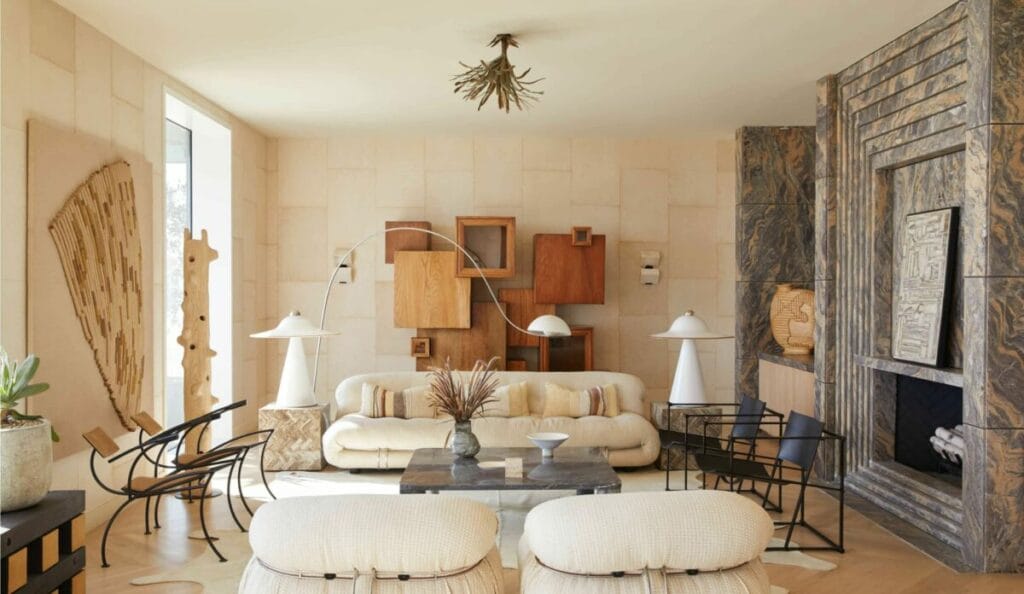
Kelly Wearstler is renowned for redefining California’s desert modernism by blending Hollywood Regency glamour with architectural restraint. Her celebrated work at Viceroy Palm Springs infuses citrus-bright hues, travertine finishes, and indoor-outdoor spatiality. In parallel, her Malibu and Bel Air homes channel sunlit palettes—driftwood taupes, shell pinks, soft grays—framed by natural light and sculptural details. She’s also created visionary digital desert environments, such as the virtual garage-pavilion for the GMC Hummer EV, where travertine floors, plaster walls, wooden beams, and minimalist furnishings merge desert texture and modern luxury
Kaherine Mueller
Katherine Mueller Design in Scottsdale has developed an organic Desert Contemporary approach since 2012, integrating local artisans and sustainability into luxury Arizona residences. Her projects valorize local craftsmanship and climate solutions adapted to the desert.
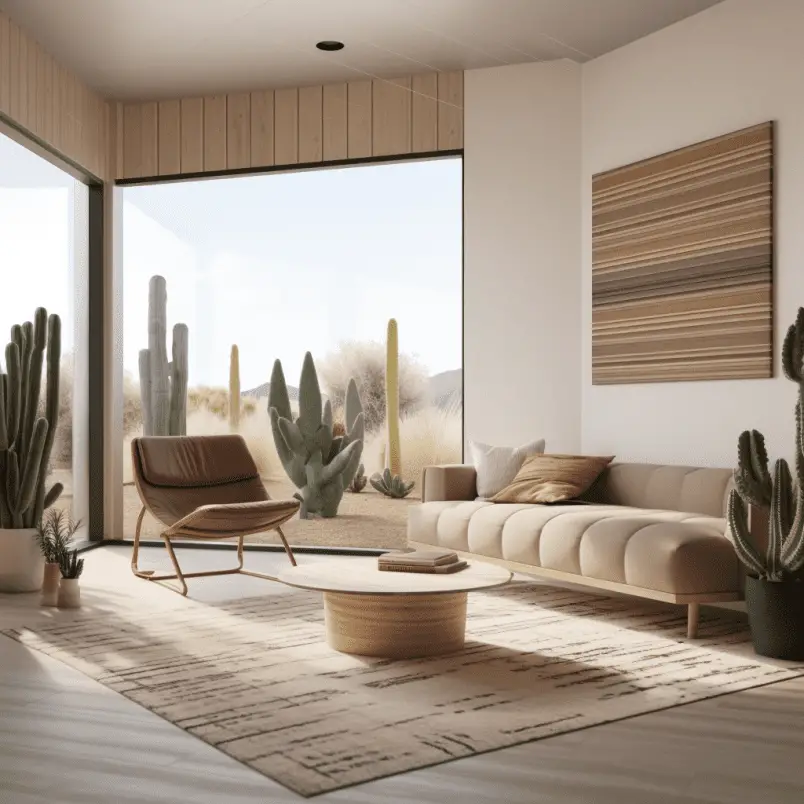
Katherine Mueller, based in Scottsdale, AZ, is a celebrated interior designer known for her Desert Modern Minimalist project — transforming an adobe-style home into a minimalist yet warm environment. She masters earth tones, bespoke cabinetry, and natural materials like Monte Blanco quartzite to evoke the desert’s essence while maintaining high-end refinement.
6) Nordic Noir: Conceptual Scandinavian Sophistication
What is Nordic Noir?
Nordic Noir represents the dramatic evolution of traditional Scandinavian style, inspired by the atmospheric qualities of Nordic crime thrillers. This trend transcends the decorative to propose spaces that are both dark and comforting, breaking with the stereotypical image of white and luminous Nordic happiness. The break from traditional Scandinavian style is observed in every detail: deep blacks and charcoal grays replace whites and beiges.
The Major Figures of Nordic Noir
Lotta Agaton
Lotta Agaton embodies this aesthetic revolution since founding her studio in 2004. Former co-founder of Residence magazine, she popularized the dark Scandinavian interior with her cocoon apartment entirely painted in dark gray, which became a global reference. Her recent collaborations include the LAYERED collection and the “PORCELANOSA Hotel” concept at Stockholm Furniture Fair 2024.
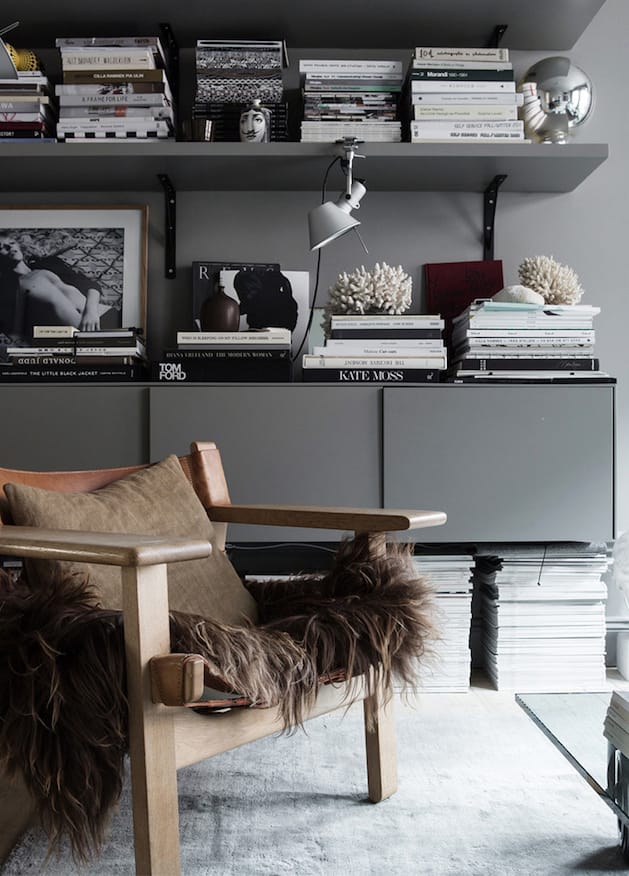
Snøhetta
Dark Nordic architecture is enriched by contributions from Snøhetta with pentagonal cabins, Snorre Stinessen Architecture and their elevated cabins contrasting warm interiors with brutal Arctic landscapes, creating spaces of sophisticated dramatization.
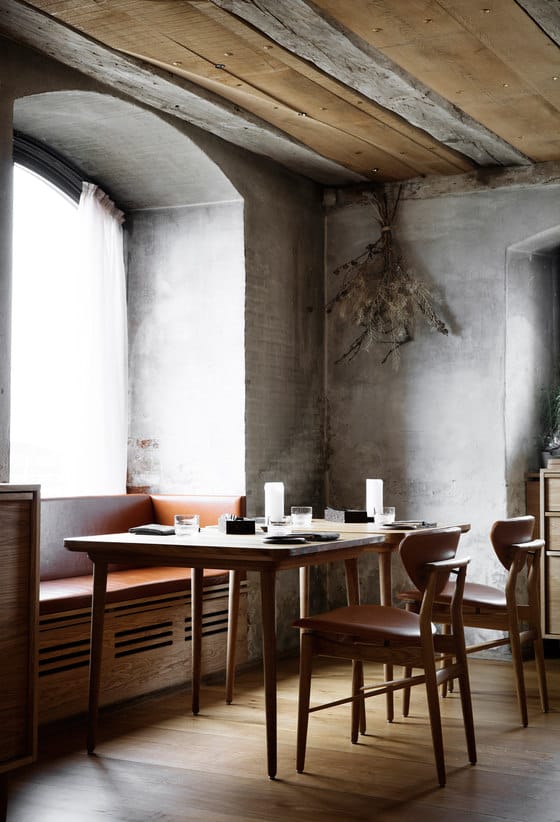
7) Dopamine Luxe: Sophisticated Maximalism
What is Dopamine Luxe?
Dopamine Luxe revolutionizes the traditional concept of maximalism by elevating it toward spheres of absolute luxury. This trend favors vibrant color palettes, elaborate contrasting patterns, and bold decorative elements, but executed with noble materials and exceptional craftsmanship. This aesthetic creates spaces that trigger happiness and enchantment, using bold colors, whimsical patterns, and playful elements.
The Major Figures of Dopamine Luxe
Alidad, Henriette von Stockhausen, and Gavin Houghton provide expert perspectives on the essence of maximalism, emphasizing the importance of balance and practicality in design. Their approaches demonstrate how maximalism, carefully orchestrated, can create spaces that are visually rich, comfortable, and functional.
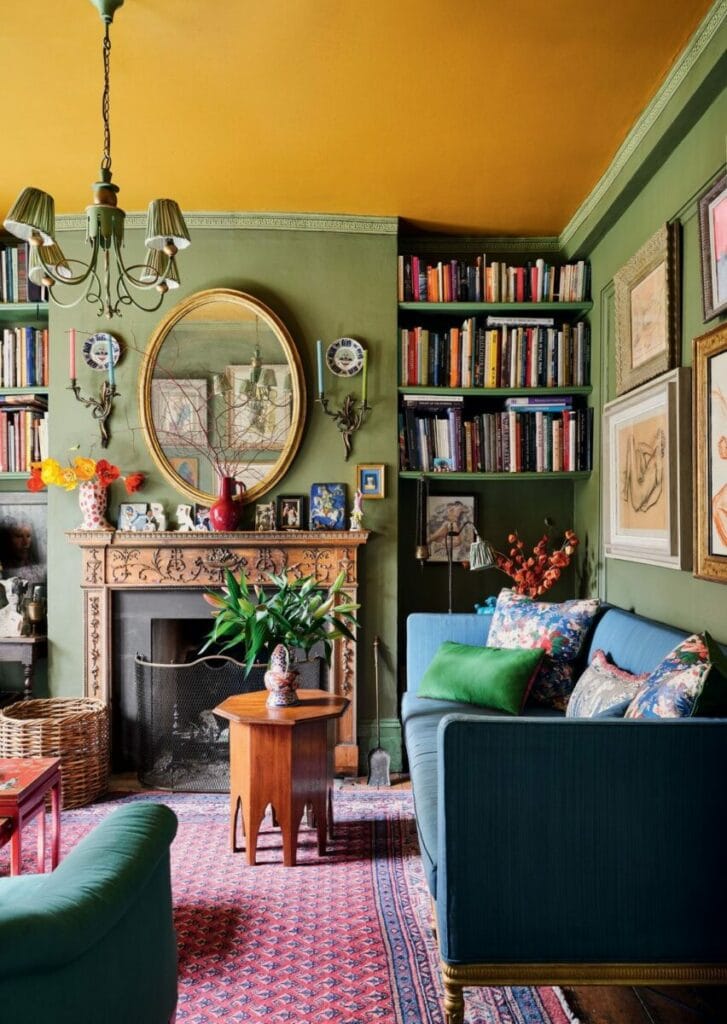
Alidad, Historic luxury – Refined Orient
Alidad is a London-based interior designer renowned for his luxurious, historically informed interiors. Born in Iran and trained in fine arts, he brings a scholarly sensitivity to each project. His hallmark is richly layered rooms—often with velvet, brocade, antique textiles, and curated objets d’art—that evoke timeless opulence without excess. Alidad blends Eastern refinement with Western classicism, creating spaces that feel both grand and intimate. His design studio is synonymous with bespoke craftsmanship and emotional storytelling through texture, color, and cultural references.
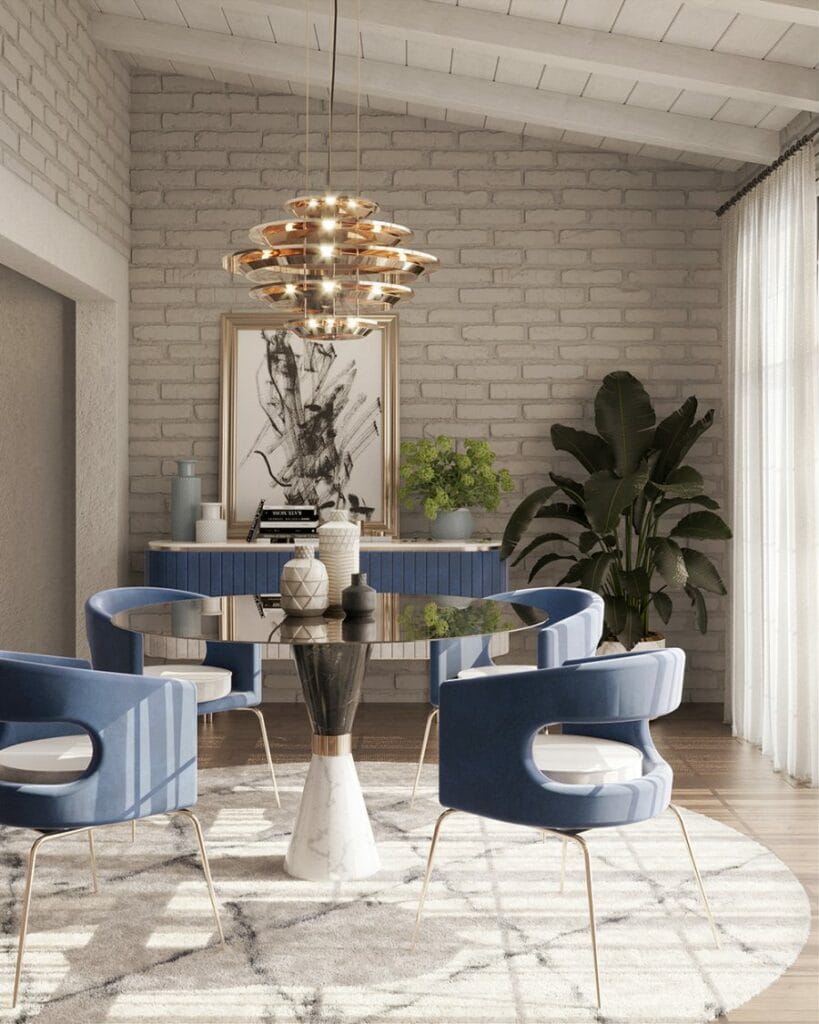
8) Grandmillennial Chic: Sophisticated Nostalgia
What is Grandmillennial Chic?
Grandmillennial style blends traditional decorative elements – floral patterns, vintage furniture, and classic silhouettes – with a contemporary twist. It embraces nostalgia through maximalist layering, rich textures, and antique-inspired details. For 2024, this trend leans toward Dark Academia and less toward floral maximalism, with a more dramatic color palette.
The Major Figures of Grandmillennial Chic
Kathy Kuo advises adding this aesthetic by mixing maximalist prints and colors like millennial mink, goldenrod, mint green, and Prussian blue with more traditional silhouettes and fabrics. Sarah Bartholomew and Ariel Okin excel in this sophisticated fusion between vintage inspiration and modern luxury.
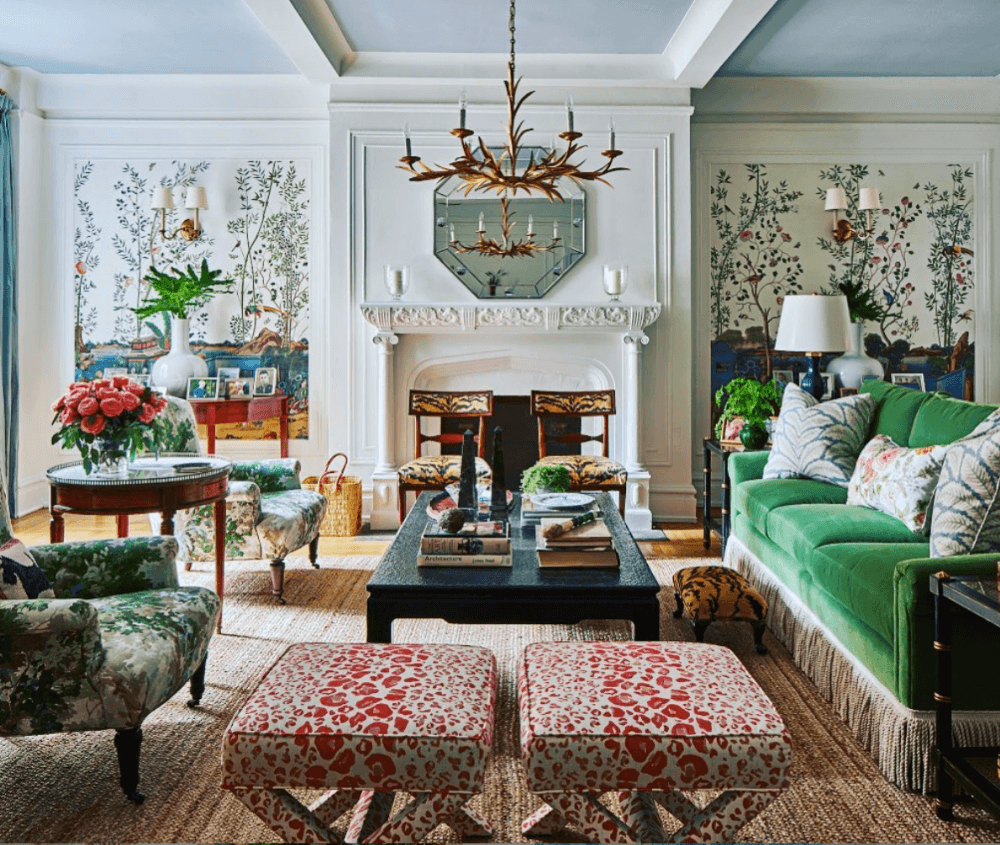
Dina Bandman of Dina Bandman Interiors emphasizes the importance of giving everything an edge, creating maximalist spaces that pay homage to the past while maintaining contemporary sophistication.
Quiet Luxury 2.0: Reinvented Discrete Elegance
What is Quiet Luxury 2.0?
Quiet Luxury focuses on clean, minimal lines, utilizing high-quality furniture pieces to elevate interior design basics. With a neutral color palette, Quiet Luxury doesn’t shout, it whispers. This 2.0 version evolves toward “elevated luxury” with organic and curved forms, richer decorative elements and patterns.
9) The Major Figures of Quiet Luxury 2.0
Camilla Douraghy Fischbacher, creative director of Christian Fischbacher, predicts the return of elevated luxury with elegant organic and curved forms in living room furniture, textured fabrics, and richer tones. Eleanor Taylor-Roberts, design consultant, analyzes this evolution as a response to the need for personal recognition in decorative choices.Justine Macfee observes a slow return toward exuberant maximalism, countering traditional quiet luxury’s sobriety.
Timothy Corrigan
Timothy Corrigan embodies the timeless elegance of high-end interior design. Based between Paris and Los Angeles, he is celebrated for blending European classicism with Californian comfort. His interiors exude warmth, sophistication, and understated luxury—perfectly capturing the spirit of Quiet Luxury. Known for restoring French châteaux like Château du Grand-Lucé, Corrigan bridges heritage and modernity with exceptional finesse.
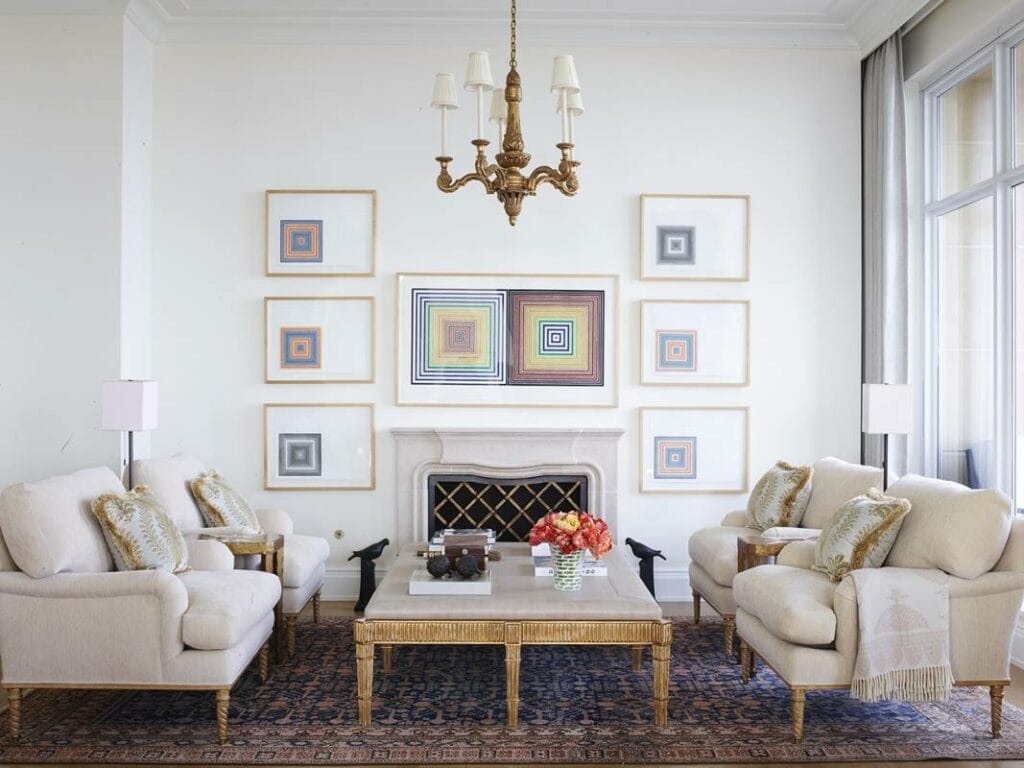
The Luxury Design Exclusivity Ecosystem
These nine trends maintain their confidential character through sophisticated entry barriers combining cultural, economic, and technical factors. Desert Modernism capitalizes on its celebrity heritage and the restricted geography of the Coachella Valley, requiring knowledge of the Neutra-Frey architectural heritage and budgets of $3-5 million for custom projects.
Nordic Noir exploits its conceptual literary depth, requiring familiarity with traditional Scandinavian aesthetics as a prerequisite for adopting its dark subversion. Residential projects range between €100-500K in Europe, with custom furniture €10-50K per piece.
The actors’ ecosystem preserves this exclusivity: appointment-only showrooms, distribution in design districts (Milan Brera, Paris Marais, London Shoreditch), exclusive presence at industry events like Modernism Week Palm Springs or Salone del Mobile Milano.
2025 Perspectives and Trend Evolution
These styles evolve toward integrating green technologies, valorizing specialized local craftsmanship, site-specific artistic collaborations, and amplified sensory experience. Dopamine Luxe’s sophisticated maximalism responds to minimalism fatigue, while Grandmillennial Chic satisfies a thirst for authenticity and transmission.
2024 trends can be interpreted as “2023 2.0” – no disruptive new themes but sophisticated upgrades and reinterpretations. The focus shifts toward personalization rather than seasonal trends, with emphasis on timeless style rather than “trendy.”
Their success in the luxury segment rests on their capacity to offer not only premium design solutions, but membership in an exclusive cultural circle. This intangible value justifies exceptional prices and preserves confidential status, guaranteeing their longevity beyond 2025 for a clientele seeking excellence without compromise and discrete sophistication.
The year 2025 thus marks the emergence of a new paradigm of decorative luxury: that of cultural exclusivity, where knowledge of codes becomes as precious as the materials themselves.

Digital entrepreneur and craft artisan, I use my unconventional background to share my vision of luxury design and interior decoration — one enriched by craftsmanship, history, and contemporary creation. Since 2012, I have been working daily in my workshop on the shores of Lake Annecy, creating bespoke interiors for discerning decorators and private clients.
